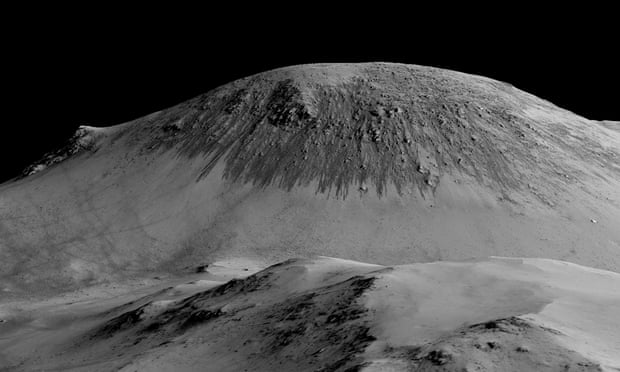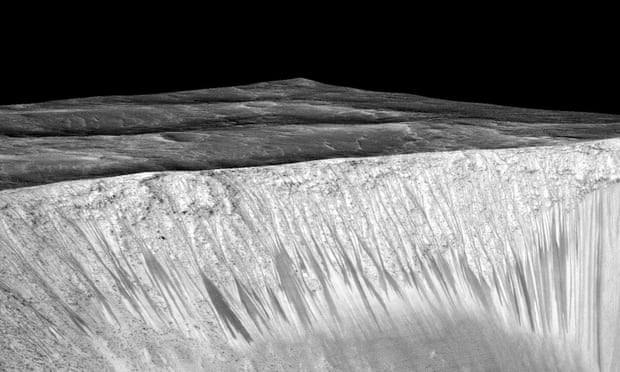In a Mars-related press conference this morning Nasa has announced that “under certain circumstances” liquid water has been found on Mars.
“Mars is not the dry arid planet that we thought of in the past,” it said in a press conference streamed online today.
Previously it was known that H2O existed on Mars in the form of ice but scientists had thought the atmosphere of Mars was too thin for liquid water to be possible.
The scientists used a spectroscopy technique to analyze the chemical composition of dark streaks (which Nasa refers to as Recurring Slope Lineae or RSL) they had previously observed on the Martian surface. These streaks had been noticed to vary following temperature changes on the surface — leading to a hypothesis that the substance was water.
Late last week the agency trailed a “major science finding” from its ongoing exploration of the red planet — showing continued savvy at Nasa’s social media mission to sustain public interest in space exploration.
Nasa landed its Curiosity Rover on Mars back in August 2012 and the bot has been exploring the surface ever since — with Nasa extending what was originally slated as a two-year mission back at the end of 2012. Its Opportunity rover, which landed on the Martian surface back in 2004, is also still active — currently surveying a portion of the surface called Marathon valley.
Discoveries from the Curiosity mission to-date have included finding calcium perchlorate in the Martian soil, as well as spikes of methane. It has also roved into an ancient streambed where liquid once flowed, and unearthed clay minerals after drilling Martian rock — again suggesting an aquatic environment in the planet’s past.
The rover has also measured radiation levels with a view to assessing the feasibility of humans spending time on the planet.
The presence of perchlorate in the Martian soil improves the stability of liquid water on the surface of Mars, Nasa scientists said today — enabling the liquid water to exist for longer before either freezing as the temperature on the planet drops, or boiling away in its thin atmosphere. This means that Mars’ water is “briny”, rather than “pure”.
The viability for life to exist in this water is “not clear” at this stage, Nasa added — although the presence of liquid water itself gives a huge boost to that search.
“My feeling when you look at Earth, water is an essential ingredient [for life]… This is tremendously exciting. We haven’t been able to answer the question does life exist beyond Earth but finding water is critical to that. We now have, I think, great opportunities to be in the right locations on Mars to thoroughly investigate that,” said Jim Green, director of planetary science at Nasa.
Investigating the RSL sites themselves to probe for life is challenging, according to Nasa, because the streaks have so far only been observed on steep slopes. So it said directly probing whether they contain life is likely to be “the domain of future robotics spacecraft specifically designed to go there” — craft which are also rigorously sterilized to avoid contamination by Earth-based microbes. Exactly where the liquid that appears in the RSL comes from is unclear at this stage.
The presence of liquid water on Mars could also help any future human mission to the planet, Nasa added.
“It took multiple spacecraft over several years to solve this mystery, and now we know there is liquid water on the surface of this cold, desert planet,” added Michael Meyer, lead scientist for Nasa’s Mars Exploration Program at the agency’s headquarters in Washington. “It seems that the more we study Mars, the more we learn how life could be supported and where there are resources to support life in the future.”




No comments:
Post a Comment